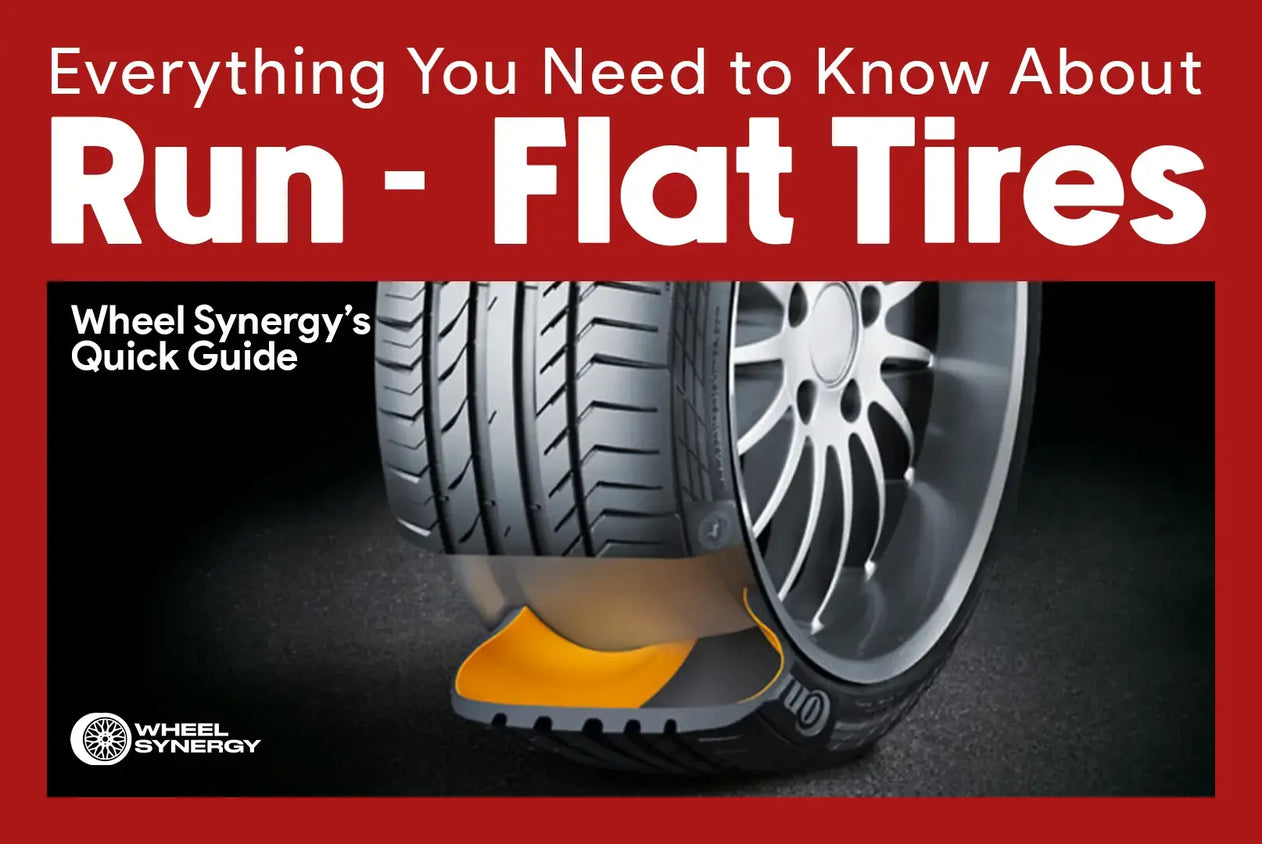Your cart is empty.




MON - FRI: 9:00AM - 5:30PM (EST)
SAT: 9:00AM - 3:00PM (EST)

In our previous blog post, we provided insights into the transformative impact of replica wheels on the automotive landscape. However, in the realm of automotive innovation, there's another remarkable game-changer: run-flat tires.
Run-flat tires are specially engineered tires designed to ensure you keep moving, even in the event of a puncture. In this concise guide, presented by Wheel Synergy, we'll take an in-depth look at run-flat tires, covering their definition, functionality, and the reasons behind their growing popularity among drivers.
Run-flat tires operate on a simple but effective principle: they have a sturdy internal support structure that bears the weight of the vehicle, even when the tire is flat. This support structure consists of heat-resistant rubber compounds and reinforced sidewalls.
In the event of a loss of air pressure, these reinforced sidewalls prevent the tire from collapsing, allowing you to continue driving at reduced speeds (typically around 50 miles) until you can safely reach a service center.
What's crucial to understand is that run-flat tires should always be paired with a Tire Pressure Monitoring System (TPMS). This combination is essential because, without the automatic alerts from TPMS, you wouldn't immediately detect a puncture.
Run-flat tires, tire plugs, and tire patches are related in the sense that they are all components or solutions associated with tire maintenance and repair.
All three are related to addressing tire damage and ensuring the continued safe operation of a vehicle. They are part of the broader field of tire maintenance and repair.
Tire plugs and patches are used to repair punctures and small holes in the tire. They are typically applied to the inner side of the tire, effectively sealing the hole and preventing air from escaping. These are common solutions for minor tire damage. Learn more about Tire Plug Vs. Tire Patch.
Run-flat tires, on the other hand, are a type of tire designed to be driven even after a puncture. They have reinforced sidewalls that can support the weight of the vehicle for a limited distance, typically around 50 miles, even if the tire has lost air pressure. Run-flat tires are a preventive measure to minimize the need for immediate tire repairs or replacements.
While run-flat tires, tire plugs, and patches are all related to tire maintenance and repair, they serve different purposes and are applied in different situations. Run-flat tires are a preventive measure, while plugs and patches are used after a puncture has occurred.
Run-flat tires significantly reduce the risk associated with changing a flat tire on the side of the road, especially during adverse weather conditions or in unsafe areas.
No need to carry a spare tire, jack, or tire-changing tools, which can free up trunk space and reduce vehicle weight.
You won't be left stranded, as run-flat tires let you reach your destination or a repair shop even after a puncture.
Run-flat tires often provide reasonable handling even when deflated, allowing you to drive to a repair shop without a noticeable loss of control.
Run-flat tires are a game-changer in the world of automotive technology. While they may not be the perfect fit for everyone, they offer a compelling solution for those who prioritize safety, convenience, and peace of mind while on the road. Whether you're considering them for your next vehicle or thinking about retrofitting your current one, run-flat tires are a remarkable innovation that's transforming the driving experience. So, the next time you hit the road, rest easy knowing that a simple flat tire won't disrupt your journey, thanks to run-flat tires.
In the event of a flat, certain run-flat tires enable you to continue driving for a distance of up to 50 miles at speeds of up to 50 miles per hour.
Technically, just as a normal tire, you can plug a run-flat tire, but it is not recommended to do so. As the run-flat tires depend upon their structural rigidity and reinforced sidewalls, plugging will do irreversible damage.
Run-flat tires can be patched in some cases depending upon the manufacturer’s guidelines, but it's recommended to consult a tire professional for evaluation and repairs.